What is Business Process Optimization? + 5 Tips
Business process optimization is a hot topic these days. In the age of remote workforces, ever-expanding digitalization, and difficult economic pressures, efficiency, transparency, and consistency have never been more important.
Today, we’re diving deep into everything you need to know about achieving this across your entire business.
The trouble is that, as a term, process optimization is typically used pretty loosely. So, if we want to be successful, we need to start with a clear definition and framework for BPO.
Then, we can start to think about more practical issues, like the tools, governance, and other strategies we can apply to derive more value from different processes.
Along the way, we’ll also check out some crucial tips to get the most out of your business process optimization efforts.
But first, we need to understand the basics.
What is business process optimization?
As the name suggests, business process optimization is all about eeking the maximum value out of your processes, while minimizing the inputs required.
Of course, we’ll think more granularly about this a little later, but the general point is that we want to make our processes as effective as possible at meeting their core goal, without unduly burdening our team.
A process here means any regular, repeatable flow of tasks that are carried out to meet a defined objective. This could be anything from approving employee leave requests to building out complex supply chains.
These will obviously look very different in terms of the practical interventions required, but the core principles are essentially the same across the board.
With that in mind, let’s think about what, exactly, we mean by optimization.
How can processes be optimized?
We said earlier that BPO seeks to derive maximum value from processes with minimal inputs. But, we can break each of these ideas down into more specific, detailed metrics that we can measure our processes against.
Inputs can be a combination of:
- Financial costs.
- Human interactions.
- Technical resources.
- Labor hours.
- Dependencies.
- Staff training.
- Unforeseen or indirect costs.
- The resources required for optimization projects themselves.
Outputs can include:
- The actual results of your process.
- The accuracy and regularity of these results.
- How well they map to business rules.
- The extent of accountability, transparency, and control you achieve.
- The time it takes to achieve your goals.
- Associate risks.
- Any issues, incidents, or roadblocks that occur along the way.
Even within each of these, we’ll encounter variations in terms of their operationalization, as well as how each one is prioritized and weighted, relative to the others.
On top of this, the real challenge is often balancing different inputs and outputs, so that we’re able to achieve the optimal return on investment.
In other words, the specific meaning of optimization is highly contextual and tied to your unique situation and business needs. For a given class of process, the optimal solution could look very different in an enterprise context than it would for a local SME, for instance.

That’s if we even accept the premise that processes can ever actually reach an optimal state. In reality, it’s more likely that optimization will be an ongoing, continuous effort.
As such, we’ll need to return to this issue later to see how we can analyze the current state of our processes and set goals for how to optimize them.
Check out our guide to business process analysis.
In the meantime, we can think more deeply about why this matters in the first place.
Why do you need process optimization?
Business process optimization is actually a major undertaking - as is the case for any transformation project. So, before we proceed, we need to have a strong business case for doing so.
So why bother optimizing processes? Or, to put it another way, in what situations do the concrete impacts of BPO outweigh the costs?
To understand this, we can return to some of the core challenges that businesses around the world face today.
Whether it’s increased competition from disruptive new players, darkening economic clouds, a global shortage of technical talent, or ever-growing regulatory pressures, the need for robust, streamlined processes has never been greater.
With that in mind, let’s think about some of the specific benefits that business process optimization brings.
8 benefits of process optimization
Business process optimization touches just about every facet of how you structure different tasks, what’s required to complete them, and the end results that you can expect. But, organizations obviously look to BPO to achieve more specific benefits.
Here are the eight core benefits of optimizing business processes.
Efficiency
Efficiency is, without doubt, the easiest impact of BPO to get your head around. This can play out in a couple of different ways, but the essential goal is to try and achieve optimal outcomes for the least possible cost.
We’re really talking about a few specific kinds of costs here.
The biggest relate to the depth and complexity of requisite human interactions within a process. In other words, how often a human has to do something manually, and how difficult or time-consuming this is.
Obviously, each of these factors has a direct relationship with the labor costs associated with a process.
When we reduce the need for manual inputs, we also see a corresponding reduction in the risk of human error. In turn, this leads to faster resolutions, improved accuracy, and lower incident rates.
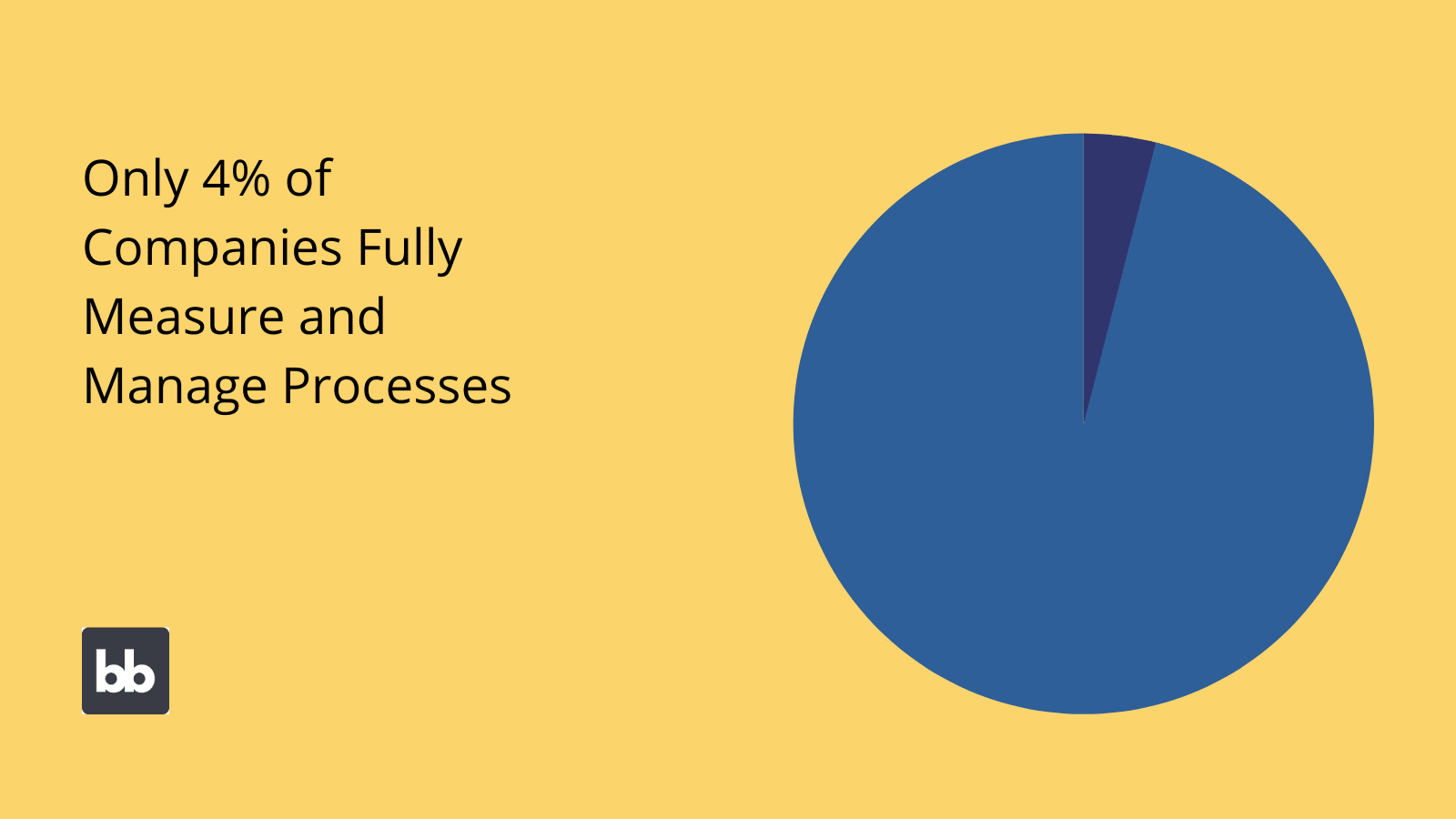
Expediency
Business process optimization is also central to your ability to achieve results at speed. Of course, this is deeply intertwined with efficiency. Often, businesses struggle to achieve optimal turnaround times, without sacrificing quality or consistency.
BPO offers several routes through this.
On the one hand, the more we’re able to reduce and replicate manual actions, the faster your employees will be able to complete tasks.
On the other, simply providing clarity around how processes are intended to work helps to empower your users to perform tasks more quickly, by eliminating ambiguity and confusion.
Improving expediency also has knock-on benefits, besides just speeding up your turnaround times. As we’ll see, this includes improved resource management, as well as providing more positive experiences for clients and employees alike.
Transparency
Transparency is the extent to which stakeholders can monitor, review, and manage what goes on within a process.
BPO offers two clear benefits here.
The first relates to the fact that we’re reducing the possibility of variation within a process as it occurs in the real world. Therefore, we must have a defined framework for measuring the progress of tasks, as well as gathering information when something goes wrong.
Secondly, we can build in specific transparency mechanisms as part of our business process optimization efforts. For instance, defined audit procedures, approval flows, system logging, and more.
Of course, improving transparency is important for all kinds of business processes, but it’s especially so in the context of legal, financial, or other sensitive verticals.
Consistency
Consistency is the secret to scalability. In order to roll processes out to larger teams or audiences, we need to have confidence that the same inputs will always lead to the same outputs, no matter which employees are involved.
A large part of this is removing individual discretion from how business rules are implemented in the real world.
For example, you might have a strict policy around how employees submit complaints to HR. However, without strict, consistent implementation, this could end up being redundant, if individual colleagues are able to make decisions at their own discretion, introducing bias.
We have a range of technical and policy-level levers that we can reach for to improve consistency, including codifying business logic through automation or adding anonymity to various information submission and review workflows.
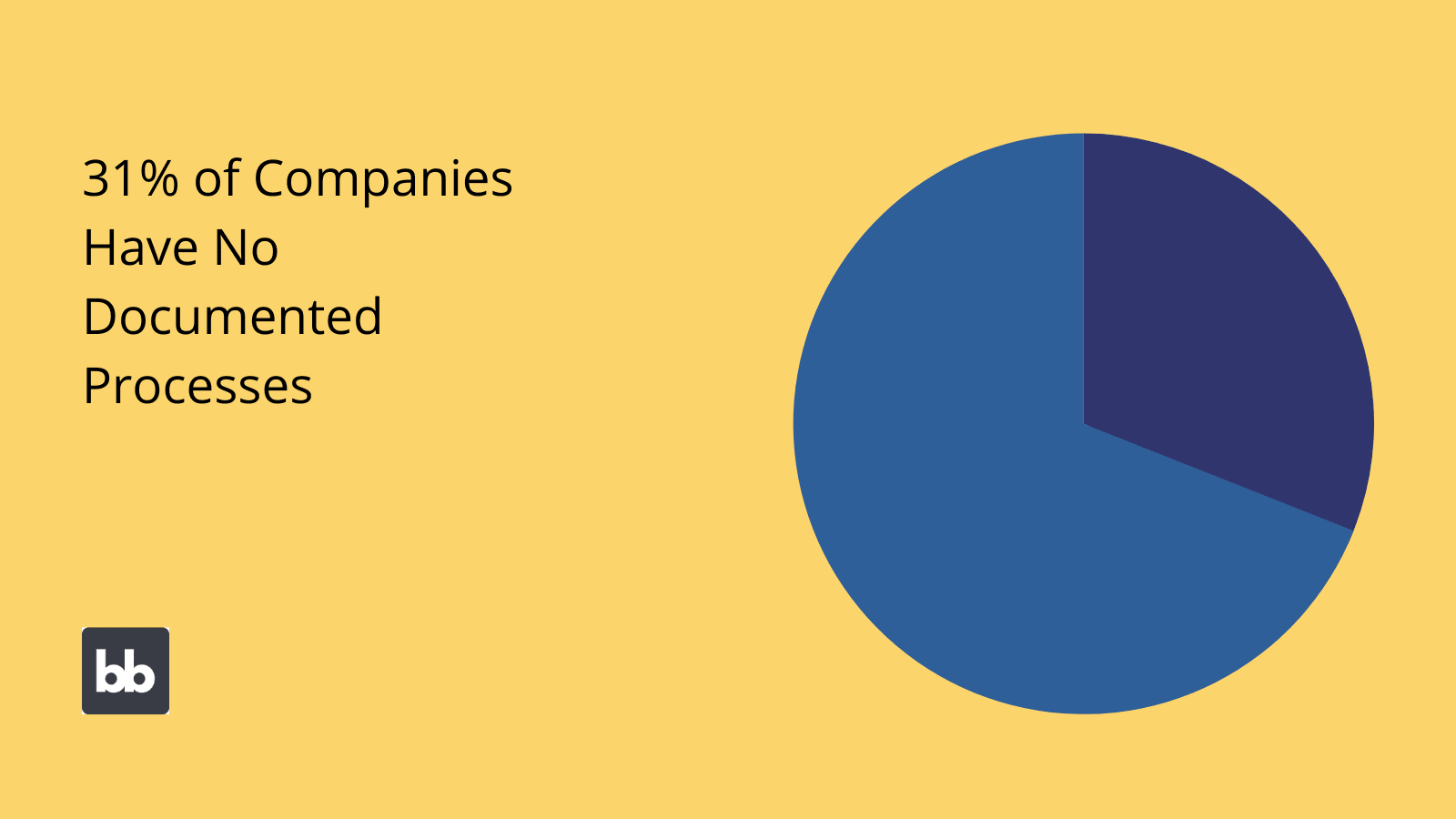
(BP Trends)
Compliance
Compliance is a major pain point for modern organizations. Between data protection, privacy, financial, environmental, and CSR issues, we’ve never seen a more complex and diffuse regulatory environment.
And that’s before you even factor in internal policies or industry-specific regulatory codes of practice.
One of the major selling points of process optimization is simplifying your compliance efforts by building your regulatory requirements into how you build and implement models for how to carry out individual tasks.
This is known as compliance by design.
Using a holistic approach, we can greatly reduce the time and effort required to achieve, maintain, and monitor compliance within our processes.
Risk management
Business today also face ever-growing and evolving risks - from specific cyber threats to reputational damage and innovative new competitors. No industry or internal department is immune to this fact.
Business process optimization can be used to predict and prevent specific issues from occurring, as well as help us to improve responses and minimize the impact of threats that we can’t eliminate.
The specific strategies that you can turn to here are innumerable.
For instance, you might create backup and recovery procedures to reduce the impact of potential data loss, as well as implementing specific security standards to prevent breaches from occurring in the first place.
Resource management
Resource management is an ever-present challenge for every business. Put simply, this is the art of ensuring that your employees have the resources they need to do their jobs effectively, while also minimizing the associated financial burdens.
From the point of view of BPO, this all circles back to efficiency.
The best way to think about this is that process optimization represents a cultural change across your entire business. When properly understood at this macro scale, BPO offers us the chance to optimize our resource utilization across the entire organization.
We can therefore divert resources away from wasteful or menial activities and toward profitable ones.
Business process management, therefore, offers a powerful, holistic approach to achieving wider organizational efficiency.
Employee and client satisfaction
BPO also offers distinct benefits at a human level. This includes improving experiences for customers and colleagues alike. However, this works a little bit differently in each case. Let’s take each one in turn.
First up, customer and client satisfaction. We know that process optimization seeks to provide consistency and speed. From your customers’ point of view, this means getting better resolutions, faster.
It’s not hard to see how this breeds improved satisfaction. Whether it’s a purchasing journey or a complaints process, nobody likes waiting around.
For employees, the benefits are a little bit more diffuse - and, to some extent, role-specific.
One general rule is that eliminating menial, repetitive tasks allows our employees to focus on more challenging, rewarding work. This has a huge impact on morale, which in turn feeds better retention rates.
We can also apply BPO to specific human resources processes, including employee onboarding and training, in order to amplify these benefits.
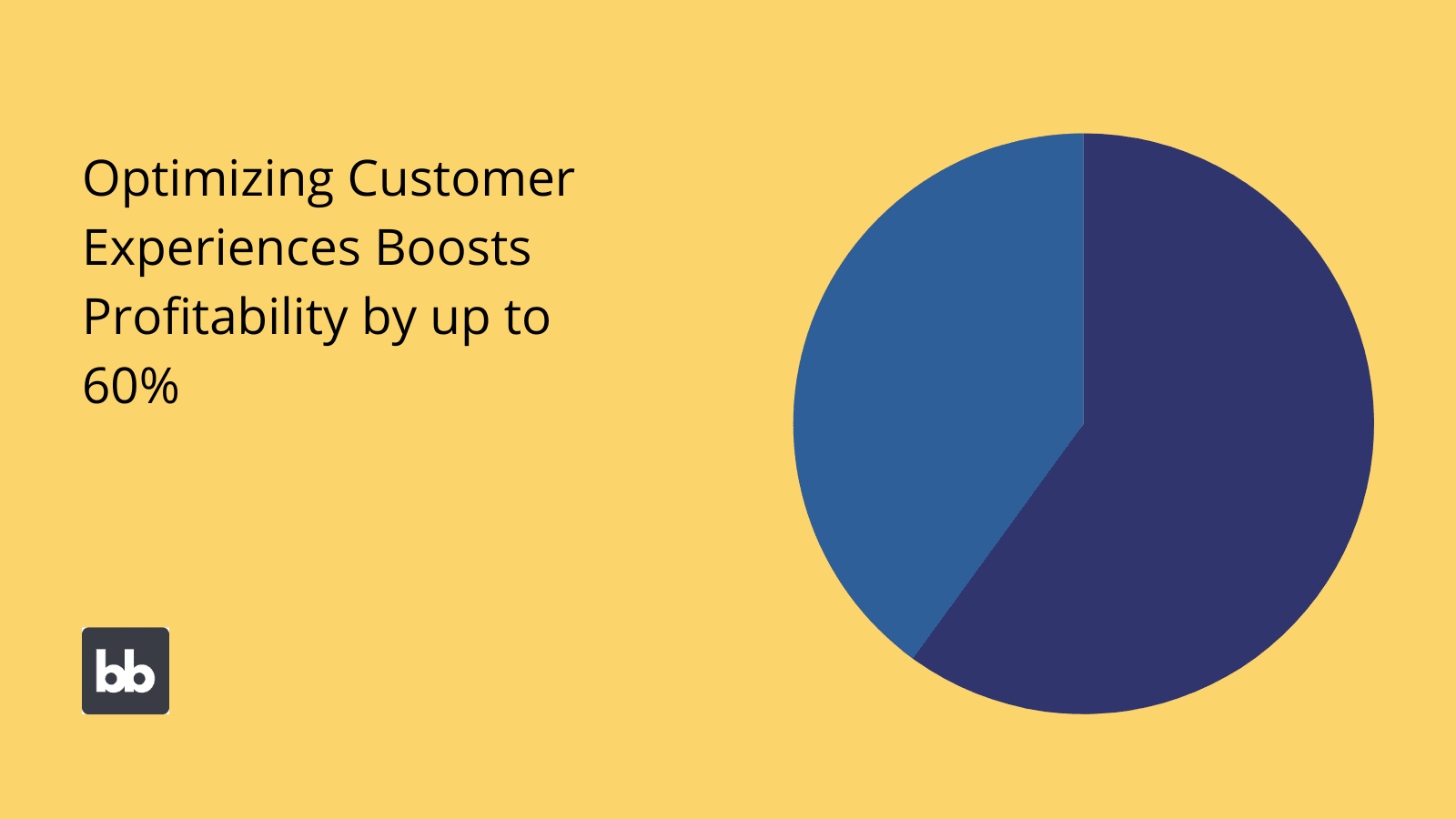
Challenges for process optimization
However, it’s also worth noting that business process optimization also brings along new hurdles and challenges. It’s not uncommon for well-meaning companies to undertake BPO and end up spending countless hours on transformation, without ever reaching their goals.
So why do optimization projects go wrong?
In truth, there are countless distinct challenges, pain points, and project bottlenecks that you might encounter.
With that in mind, here are the most common issues that might pour cold water on your process optimization efforts.
Unclear expectations
One of the most common reasons that process optimization projects fail is a lack of clarity around what they’re actually meant to achieve. Unfortunately, it’s not enough to merely want better processes.
Instead, it’s crucial to have clear, quantifiable, and specific goals.
As you might expect, these will largely relate to the themes we saw in our discussion of the benefits of business process optimization.
So, as a point of departure, you might have a specific issue with efficiency within your target processes, as a function of the required labor costs. We’d then set a specific target for how we want to reduce these costs - either in raw terms or as a proportion of the current figure.
More often than not, we’ll do the same with several of the core benefits we looked at earlier.
Whatever your specific goals, this approach solves a couple of key problems. First, it allows you to measure the progress and return on investment of your optimization efforts.
Second, it allows you to triage issues if you’re failing to meet your initial expectations, and come up with improvements based on this.
Communications issues
Business process optimization is also fraught with potential communications issues. Indeed, this can come into play at basically every stage. However, for our purpose, it’s worthwhile zooming in on some of the most common problems.
One of the real killers is around creating a shared vision for BPO in the first place. So, we can have much more confidence in our team’s chances of markedly improving our processes when there’s agreement about the need for change and our priorities.
Otherwise, our initiatives are unlikely to be coherent.
Besides this, we have other communication issues that only occur in the weeds of a project. For instance, gathering and sharing requirements, project milestones, and information on implementation successes or blockages.
This becomes even more difficult the more complex and multi-actored our processes are, with a corresponding increase in the chance of miscommunications.
Scope creep, spillover, and process dependencies
Taking things from a slightly different angle, a lot of transformation projects fail because of unrealistic expectations around the work that they’re going to require. Or, the project might grow well beyond its initial scope.
This is what’s known as scope creep.
In the context of optimization, this often happens as a result of insufficient analysis of a given process’ dependencies - that is, the other related processes that feed it.
We’ll then encounter an issue known as spillover. Basically, this is when we set out to improve one process, only to realize that we’re going to need to do the same with other processes in order to be effective.
The problem here is pretty obvious. Chances are we’re going to end up with spiraling costs, project delays, or other major roadblocks.

Overreliance on technology
It’s an unfortunate reality that the term process optimization is used more or less synonymously with digital transformation. Although they are related, they aren’t the same thing.
This leads to a misconception that the solution to inefficiencies is investing in shiny new toys.
Technology plays a huge role, of course. But this can’t come at the expense of sound policy and governance-level optimizations.
The trap that many businesses fall into is doing just that - failing to create an effective process model and hoping that technology will make up the shortfall.
Check out our ultimate guide to business process management tools .
Internal blockers
Sometimes, optimizations fail because of a lack of stakeholder buy-in. Unfortunately, this can apply at several levels, often in contradictory ways. Say, for example, you wanted to change the way your employees requested devices to gain more oversight and control.
We’ll encounter problems if there isn’t broad agreement that things need to change.
For example, your IT team might resist the change if they perceive that it will create additional admin work. Frontline employees will resist if they think it will be harder to get a hold of a device, or that their usage will be monitored more closely.
Rather than simply ignoring these concerns, the key is to build them into your approach and convince potential blockers that BPO will actually contribute to making their lives easier.
Then there’s the issue of convincing top-level decision-makers of the need for change. This greatly impacts our ability to secure the necessary resources.
Resourcing and staffing issues
Business process optimization is meant, in large part, to save us money. However, it will almost inevitably require some upfront investment. This can come in the form of our team’s time, new tools, bringing in additional skills, and other resources needed for implementation.
The challenge here comes in two parts.
First, there’s the issue of securing internal resources.
In other words, gaining permission to go ahead with BPO from higher-ups. Again, this means convincing stakeholders that there’s a need for change and that our approach will provide return on investment.
Second, we need the right skills to design and implement changes. This is arguably the more difficult part of the equation. After all, optimization requires a rare combination of commercial awareness, operational knowledge, and technical skills.
The question is whether we have sufficient expertise in-house. If not, we’ll need to look to outsourcing, additional staff training, or recruitment for specific skills.
You might also like our guide to IT operations .
Time pressures
Finally, process optimization projects are often thwarted by time pressures. That is, when your decisions are negatively impacted by a need for urgent change. Unfortunately, this can play out in so many different ways that it’s difficult to generalize.
Instead, the best approach is to think about a couple of examples.
Say that your suppliers raised their prices, so you want to find efficiency savings elsewhere in order to maintain profitability, without raising your own prices.
This would be pretty urgent. However, it would be a mistake to rush your efforts, as you’d then risk achieving better efficiency at the expense of other important outcomes, like accountability or consistency.
Most often, time pressures come from above.
As such, an important mitigation strategy here is to ensure that stakeholders have realistic expectations, and understand the need for due diligence and attention to detail when optimizing processes.
Take a look at our guide to business process management tools .
Real-world examples of process optimization
We’ve covered a lot of theory so far.
To solidify this knowledge, it’s useful to think about a couple of real-world examples of business process optimization. This will help us to see some of the principles we’ve discussed so far in action, as well as providing some valuable inspiration.
We know that BPO can touch on just about every aspect of your business.
Let’s check out some common use cases for BPO to see a few areas where you stand to gain the most.
Request and approval processes
Some of the most common and pervasive processes in your business can be expressed as request/approval flows. Basically, this means that one employee asks for permission to access a particular resource or carry out a specific action.
Another employee then assesses and approves or declines this request, based on defined business rules.
BPO can greatly expedite and regularize this process, with measures including:
- Providing clarity around how responsibilities are separated.
- Using dedicated interfaces to simplify information submission for speed and consistency.
- Automating approval decisions based on the submitted information, to eliminate manual admin work.
- Creating a clear record of decisions and the rationale behind them to ensure consistency and transparency.
- Eliminating extraneous calls, meetings, and other manual communications tasks.
For example, we could apply a framework like this to the process our employees use to book time off.
Project estimations and quotations
Alternatively, we can also think about uses for process optimization within the commercial side of our business. Normally, our top priorities here are the tasks that eat up the largest proportion of our team’s time.
Manually creating quotes and estimates is a great example of this.
Luckily, this is also a task that’s ripe for optimization, owing to the relative regularity of the calculations involved.
So, we can easily implement strategies including:
- Providing streamlined interfaces for gathering requirements.
- Crafting automation rules to reduce the need for manual calculations.
- Implementing defined review and approval processes to speed up communications.
- Leveraging integrations to create more efficient follow-on actions, including for billing.
IT incident responses
Incident responses are one area where control, oversight, and centralization are critical. In large part, this comes down to the need to ensure that we gather the right information, identify issues, plan our response, document learning, and analyze outcomes.
Of course, there are all kinds of incidents that we can think about here. For the sake of example, we’ll focus on IT incidents, since these are often the highest stakes.
This can include service disruption, data loss, reputational damage, regulatory fines, physical damage and injury, and more.
To properly respond to IT incidents, we need a combination of the following:
- An easy, convenient submission process to encourage users to report incidents.
- Intuitive UIs to ensure the right information is collected.
- Effective screening, categorization, and prioritization rules.
- Clear procedures about the steps that are required to put things right in the case of a known threat.
- Oversight mechanisms for the status of specific responses.
- Knowledge creation and documentation policies for preventing future incidents based on lessons learned.
Defining a process optimization strategy
Next, we can turn our attention to the specific steps we can take to optimize processes. The trouble is that, even for relatively generic tasks, every business has unique processes - although the extent of variation might seem minor.
Then there’s the fact that underlying goals and available resources can vary massively from business to business.
The crux of all of this is that you’ll need to create a strategy that’s specific to your business needs - including the processes you want to target, the resources you can dedicate to transformation, and what you want to achieve.
Therefore, we need a framework for creating a process optimization strategy.
Here are the steps you can follow.
1. Information gathering and analysis
First, we need to establish where we’re starting from. This means outlining how whichever process we’re looking at works at present. We can start by being entirely descriptive since your processes might never have been mapped before.
The goal is to set out each of the constituent actions that must be carried out for a task to be completed. The most popular way to do this using flowchart diagrams.
With this in place, we can begin to be more analytical. The idea is to look at each constituent task with respect to the following:
- The number of employee actions required.
- How long these take.
- How long the process as a whole takes.
- The complexity of decision making.
- The incidence of errors, delays, and mistakes.
- The present level of adherence.
- The total cost of completing the task.
- The respective cost of each constituent action.
- How results vary based on the colleagues involved.
- To what extent each constituent task is actually necessary.
So, in other words, we’re trying to quantify the effectiveness of our processes in their current form.
Ultimately, what we’re looking for is specific opportunities for improvement.
This leads us neatly onto setting goals.
2. Defining goals
Once we know what our processes are costing us, the next step is coming up with realistic targets for how we can improve upon this. Armed with a detailed understanding of what each stage of our process contributes, this is relatively straightforward.
We can prioritize the specific areas where we stand the gain the most - where we’re disproportionately using up time and money. That way, we can work through each constituent part of our process in order of priority.
As ever, it’s important to be conscious of the need to set effective goals.
The key here is that our goals are specific, measurable, and time-bound. For instance, we might want to halve the time it takes for a colleague to complete a particular task, or cut 30% off the total labor costs incurred within a process.
It’s also important to set a time frame for when you expect to achieve your goals.
We can also break this down into more manageable objectives, based on the costs and other resources associated with each step of your process. This is a helpful way to flesh out the more granular road map you’ll follow to meet your wider goals.
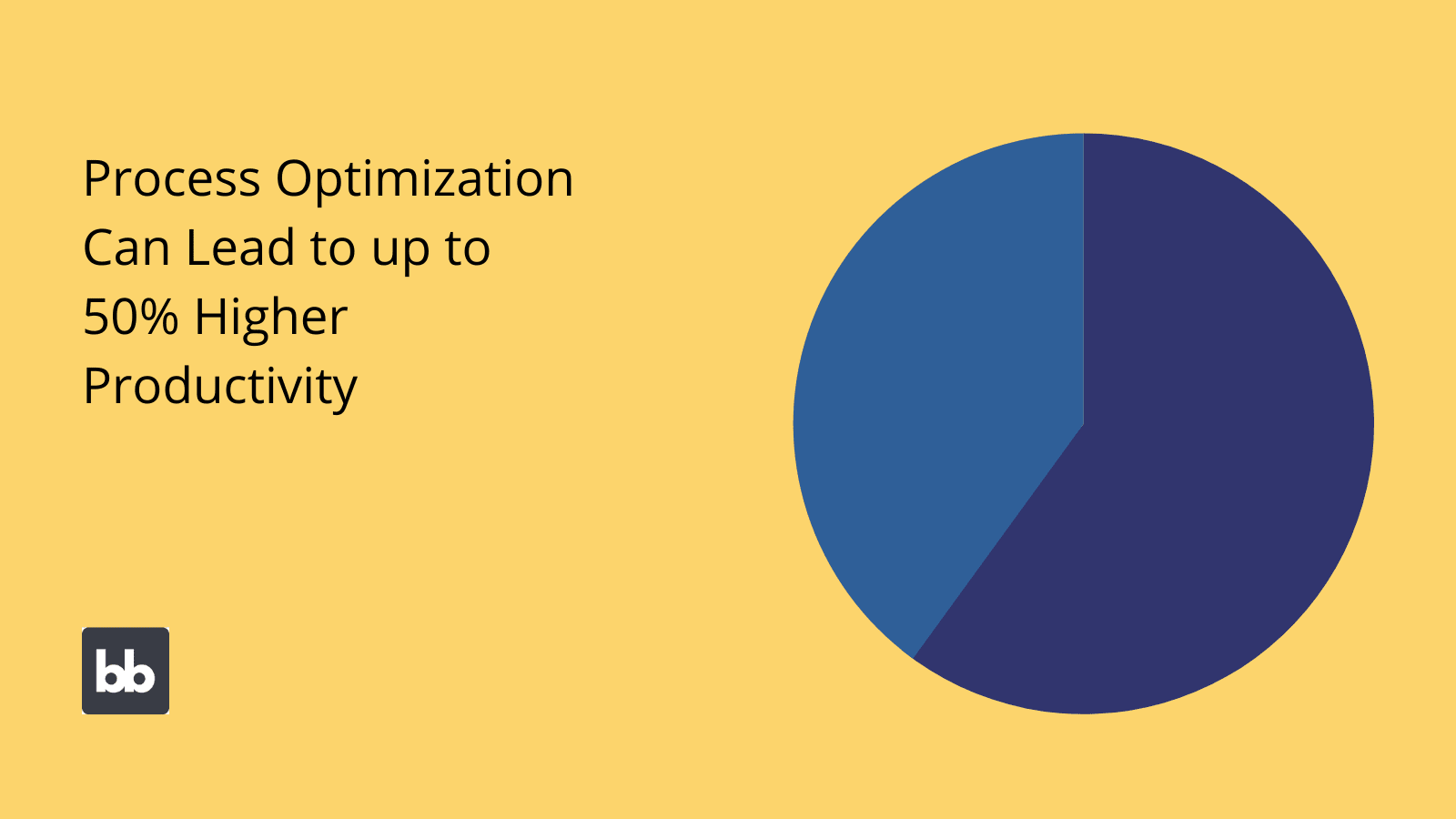
You might also like our guide to enterprise software development .
3. Process modeling
Now the fun stuff starts. With a clear idea of what we want to achieve, our next step is to design our new process. Obviously, the easiest point of departure is how things work currently - although you could start from scratch instead if you wanted to.
An easy place to start is any redundancy that you might have identified in your analysis. In extreme cases, you might have entirely redundant steps. More often though, redundancy will crop up within a specific step or action.
For instance, if an extraneous number of colleagues need to weigh in on a simple decision or an employee needs to spend excessive time on unnecessary paperwork.
Therefore, our guiding principle must be to consider each constituent action in terms of the value it provides for the process as a whole.
To determine this, we need clarity around the underlying business rules that govern our processes. For example, if we know the exact criteria that are supposed to be applied in a given decision, it’s a lot easier to minimize the number of stakeholders required.
Just like when we were documenting our current processes, by the end of this stage, we should be able to document how our new process is intended to work in abstract terms, using flow-chart diagrams or another format.
4. Policy and governance interventions
Next, we need to think about the specific measures we’re going to use to implement our process and its underlying rules.
It’s important to note here that we have different kinds of interventions available to us - and that these need to be implemented in the right order. So, we have governance or policy-level interventions, and then we have technical interventions.
The policy and governance side of things needs to come first. This is because we don’t want a situation where we’re relying on technology to make up for inadequate underlying policies. They also play slightly different roles.
Governance instruments are pretty widely misunderstood. At the most basic level, we can use policy-level strategies to ensure that employees understand how processes are meant to work, and the rationale behind why things need to be done a certain way.
How we delegate responsibilities plays a massive role here. Furnishing each actor in a process with clear, discrete responsibilities is central to its efficiency, regularity, and transparency.
We also need ongoing communications surrounding changes to our processes, or the policies we use to implement them, as well as to provide clarity on fringe cases or where issues have occurred.
5. Technical intervention
Once we’ve exhausted governance-level implementation, we can move on to technical measures. Again the idea is that we get the fundamentals right and then use technology to build on this - not the other way around.
We’ve hinted at a few of the key interventions that are open to us already.
Automation is probably at the front of your mind. We can’t overstate the importance of this. Essentially, the goal of all automation is to replicate human decision-making.
Whether this means supplementing or replacing manual actions, the net effect is providing superior levels of consistency, speed, and regularity.
Check out our guide to business process automation to find out more.
However, other technical interventions can be just as valuable. Often, this is made up of relatively simple steps. For instance, simply providing more efficient user interfaces for the individual tasks that make up processes.
Take a look at our guide to app UI design for more details on how this works in practice.
Alternatively, we can leverage integrations between existing tools to optimize business processes. Of course, this joins up with automation too. This is an attractive option, as it’s often a highly cost-effective way to achieve impressive results.
For example, we might have a process involving our CRM and our invoicing software, but no way to pass information between them. With integration, we can streamline such processes to get the most out of our existing platforms.
6. Performance monitoring
Once we’ve implemented our changes, the next step is measuring our progress toward the goals that we defined earlier. Performance monitoring helps us to determine the value of our efforts, as well as the follow-on actions that are needed for further improvement.
First, we can think about how we’re going to track our progress.
Of course, this depends on what our goals actually are. Still, we can make some useful general points. The first priority is giving the right employees fast, easy access to relevant insights, in the form of dynamic dashboards and other visualization tools.
Beyond this, the bigger challenge is deciding what to do on the basis of our progress or lack thereof.
Again, it’s hard to generalize, but there are a few common issues that we can identify as worth looking out for, including:
- Poor adherence.
- Lack of training.
- Insufficient resourcing.
- Unaccounted-for scenarios.
- Technical issues.
- Ineffective governance.
- Unrealistic expectations.
In any case, we need to identify the root cause of the gap between our real-life impact and the results we expected in order to take action.
Even if we’re meeting our goals, performance monitoring is an invaluable tool for finding new and better ways to optimize processes.
7. Continuous improvement
This leads us neatly to the idea of continuous improvement. This is baked into business process optimization.
We can always do better.
One way to think about this is to treat BPO as an iterative or cyclical process. So, once we’ve carried out improvements to one area of our business, we don’t simply forget about it and move on.
Rather, BPO is a cultural shift that empowers us to seek out new and better ways of carrying out our daily tasks.
Since we can always do things faster, business process optimization is never finished.
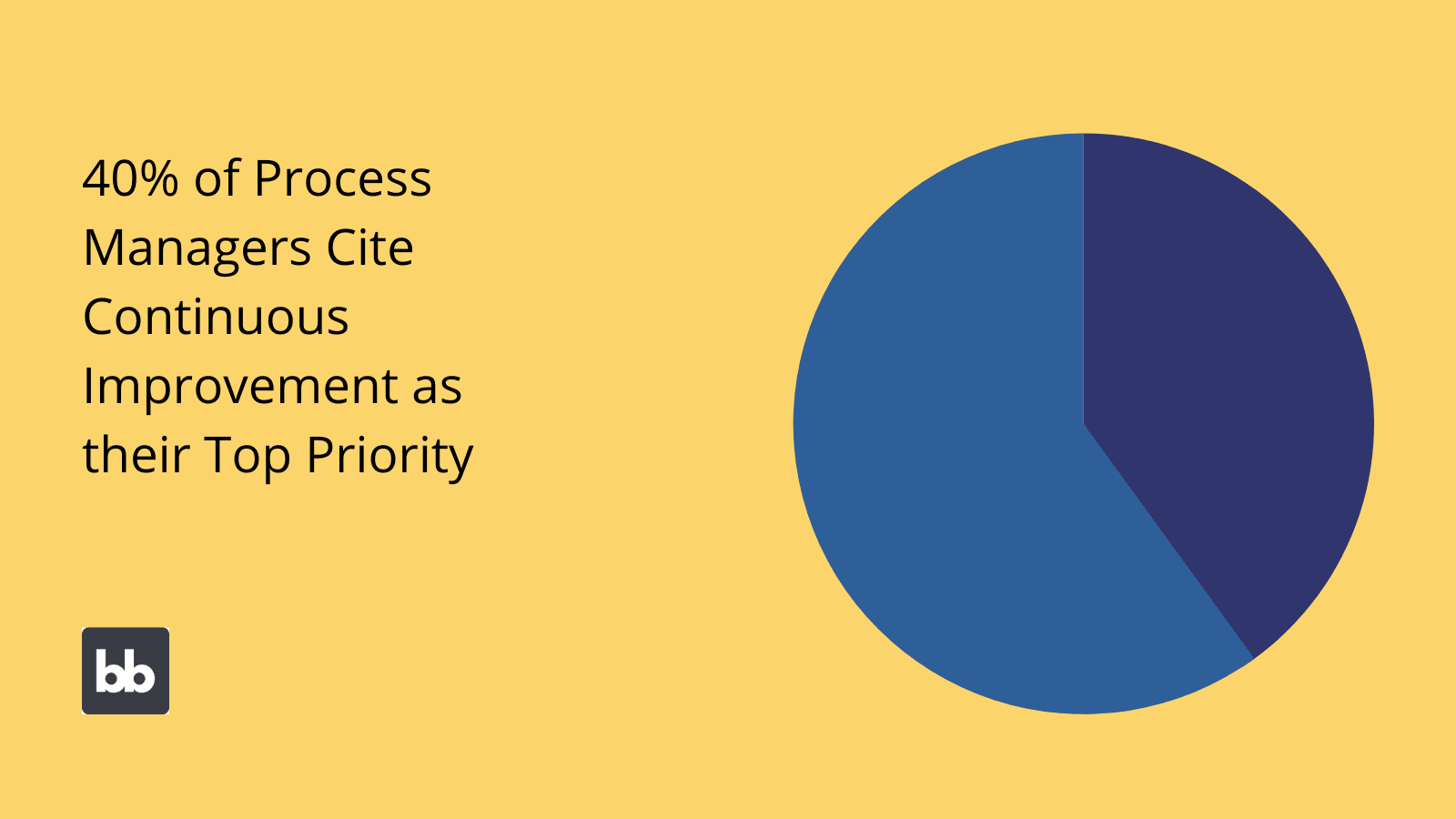
5 tips for business process optimization
Now that we have a broad framework for optimizing business processes, we can move on to some more granular, situational tips for making the most of your efforts. These are the extra strategies that you can employ to shore up your success.
Let’s jump right in.
1. Keep the main thing the main thing
They say that to be successful, the main thing is to keep the main thing the main thing. To apply this idea to business process optimization, we could say that the key to success is keeping a tight focus on the underlying problems we’re trying to solve.
This achieves a couple of crucial things:
- Allowing us to prioritize in the case that different goals could conflict with each other.
- Helping to prevent scope creep from undermining our efforts.
One of the major risks for any change project is that we lose sight of what we’re trying to achieve.
By relating all decisions back to our underlying business goals, we’re in a stronger position to create effective solutions.
2. Document everything
One of the most important things you can do to ensure the success and longevity of your optimization efforts is to create extensive, detailed documentation. This should comprise every decision, policy, procedure, rule, and tool included in your processes.
We then need to create accessible, centralized information resources on the basis of this.
Again, this achieves several important benefits:
- Providing employees with valuable reference materials.
- Ensuring that processes can be maintained regardless of staff turnover.
- Updates and changes to processes can be more effectively communicated.
- Reducing admin and communications workloads.
Additionally, documentation plays a crucial role in our policy-level implementation, in the sense that the less ambiguity that exists around our processes, the better our adherence will be.
3. Leverage feedback
Even in the most centralized processes, it’s a mistake to implement BPO in a wholly top-down manner.
Instead, on-the-ground employees can offer valuable insights into just about every possible scenario.
This can come in several different forms. For example, employees that have first-hand experience working within a particular process will obviously have a large amount of tacit knowledge.
Therefore, we can also expect them to have a greater understanding of the present pain points, issues, and inefficiencies that are currently faced within it.
As a side effect, allowing employees to participate in your business process optimization exercise will greatly improve your ability to gain their support for your changes.
4. Remember the Pareto principle
The Pareto principle states that 80% of outcomes stem from 20% of inputs. In other words, a fifth of our efforts get us the vast majority of the results. Obviously, this isn’t a universal or particularly scientific rule, but it is a good guiding principle.
And it applies quite neatly to business process optimization too.
So, say you wanted to regularize the way your employees submit invoices, with a view to improving transparency, consistency, and speed. If you don’t have a defined process in place, to begin with, then any regularization will go a long way.
Alternatively, we can simply focus on the largest pain points - the worst offenders in terms of inefficiency, scope for error, delays, or miscommunication.
That way, attacking a small minority of issues within a process will lead to the largest gains, with the least possible effort.
5. Consider scalability
Finally, a common mistake that businesses make when they set out to optimize processes is failing to account for their future needs. The issue here is what’s known as scalability - or how easily your processes can adapt to growth or expansion.
This comes in two varieties:
- Horizontal scaling - Adding new elements, requirements, or stages to your processes.
- Vertical scaling - Expanding the rate at which work is carried out or the number of resources dealt with by the process.
For any process, you should build in the expectation that it might need to scale in either direction. For instance, if your team expands or you need to add extra layers of oversight.
The trouble is that if you fail to do this, you’ll create a whole raft of problems for yourself down the line. In extreme cases, you might need to completely redesign your processes to meet changing demands, even after previously carrying out BPO.
Naturally, this is best avoided, since it creates unnecessary expense, disruption, and delays.
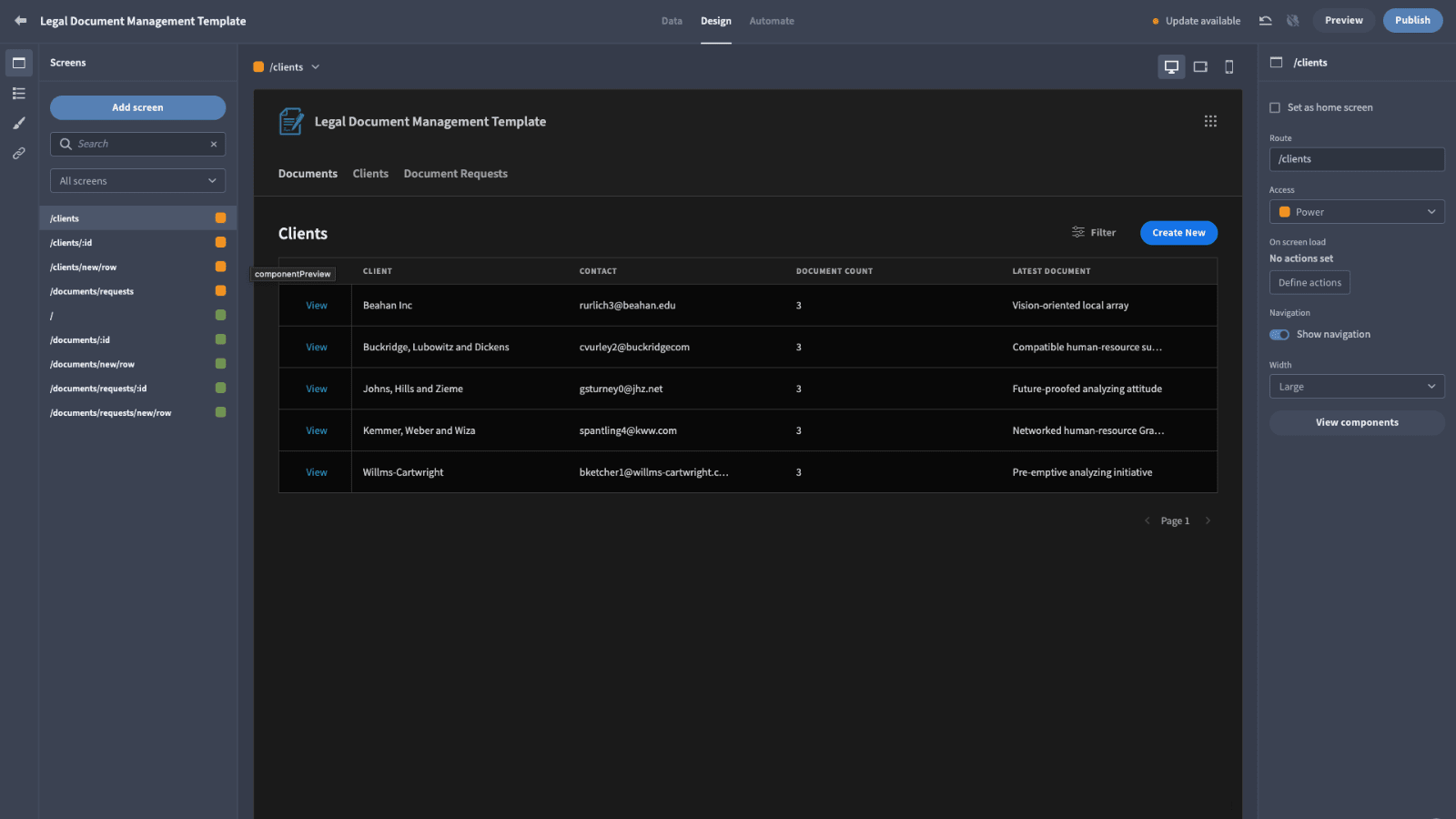
Build better processes with Budibase
Of course, we couldn’t end our discussion on business process optimization without taking a look at what Budibase brings to the table.
Spoiler, it’s a lot.
We’re proud to be at the cutting edge of the low-code revolution. Let’s take a look at why our platform is a developer’s best friend.
Hassle-free, low-code app development
Budibase is the ideal solution for building all kinds of internal tools, utilities, workflow apps, and more. We offer auto-generated CRUD screens, streamlined developer experiences, extensive customization, and professional results, in a fraction of the time.
There’s never been a faster, easier way for developers and non-technical colleagues alike to digitalize processes.
Check out our features overview for more information.
Self-hosting or cloud deployments
Self-hosted Budibase tools are perfect for managing sensitive and business-critical processes alike. Deploy to your own infrastructure using Kubernetes, Docker, Digital Ocean, and more, for complete control over your tools.
We also offer our own proprietary cloud-based hosting. Use Budibase Cloud to get up and running quickly and let us worry about the details.
Head over to our pricing page to find out more about both options.
External data support
We also lead the pack for external data support. Budibase features dedicated data connectors for SQL, Postgres, Mongo, Couch, Airtable, Oracle, S3, Google Sheets, REST, Elasticsearch, and more.
Or, you can use our internal database, BudibaseDB, to build your data layer in seconds. Check out our ultimate guide to web app data sources for more information.
Process automation
Budibase makes automating processes a cinch. Build automations using built-in actions, configurable triggers, and an intuitive flow-chart-based interface. Chain, combine, and nest actions to create custom rules, with little to no custom code.
Our platform also offers extensive support for third-party integrations within automations - as triggers and automations alike.
Custom plug-ins
Budibase is built for simplicity by default, but extensibility when you need it. Our custom plug-ins are the perfect example of this. With Budibase 2.0, you can create your own components and data sources, using our dedicated CLI tools.
Roll out your custom plug-ins across all of your Budibase tools for an exceptional level of personalization and close mapping to your business processes.
Take a look at our plug-ins documentation for more information.
Role-based access control
RBAC is one of the easiest and most effective ways to ensure security, without compromising on usability. Grant users the perfect level of access for their needs, at the level of data sources, queries, screens, or components.
With Budibase, it’s never been easier to implement RBAC effectively.